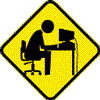Hi, my computer has suddenly started taking over 30 seconds to display the POST screen. All the fans and hard disks spin up straight away and there are no beeps or errors, but there is no video output for 30 seconds (which is quite a long time considering the POST used to come up straightaway). When the display comes on it starts from the beginning of the POST, i.e. nothing is happening whilst the display is blank.
I have made no hardware changes, or any software changes that I can think of, and the system seems to run OK. I have cleared the CMOS and this makes no difference. I have checked all seatings and cables etc.
Could it be that a component is failing?
This is my system:-
Windows 7 Home Premium
Gigabyte EP45-DS3
Intel Core 2 Duo E8600
4GB Corsair Dominator 8500
NVIDIA GeForce 8600 GT
Pioneer DVR-212D
Thanks
Tom
















 Sign In
Sign In Create Account
Create Account

